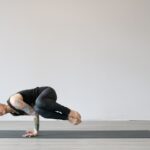In today’s fast-paced and stressful world, it is more important than ever to prioritize our health and well-being. However, many people tend to focus solely on one aspect of their health, such as physical fitness or mental well-being, without considering the interconnectedness of these different aspects. This is where a holistic approach to health and wellness comes in.
Holistic health and wellness is a concept that takes into account the whole person – mind, body, and spirit – and recognizes that these aspects are interconnected and influence each other. It emphasizes the importance of addressing all areas of our lives in order to achieve optimal health and well-being.
By taking a holistic approach to health and wellness, we can experience a wide range of benefits. Not only can it improve our physical health, but it can also enhance our mental clarity, emotional well-being, and overall quality of life. It allows us to address the root causes of any imbalances or issues we may be experiencing, rather than just treating the symptoms.
Key Takeaways
- A holistic approach to health and wellness is important for overall well-being.
- Cognitive training and physical exercise have numerous benefits for the mind and body.
- Cognitive training involves exercises that challenge the brain and improve cognitive function.
- Physical exercise includes various types of activities that improve physical health and reduce the risk of chronic diseases.
- Combining cognitive training and physical exercise can lead to even greater benefits for overall health and wellness.
The Benefits of Cognitive Training and Physical Exercise
When it comes to a holistic approach to health and wellness, two key components are cognitive training and physical exercise. Both of these practices have been shown to have numerous benefits for our overall well-being.
Cognitive training refers to exercises and activities that are designed to improve cognitive function, such as memory, attention, problem-solving skills, and mental flexibility. These exercises can help keep our brains sharp and improve our ability to think critically and make decisions.
Physical exercise, on the other hand, is any form of movement that gets our bodies moving and our hearts pumping. It has been proven to have a wide range of benefits for our physical health, including improved cardiovascular fitness, increased strength and flexibility, weight management, and reduced risk of chronic diseases such as heart disease and diabetes.
Understanding Cognitive Training: What It Is and How It Works
Cognitive training is a form of mental exercise that focuses on improving cognitive abilities such as memory, attention, and problem-solving skills. It involves engaging in activities that challenge the brain and require mental effort.
There are many different types of cognitive training exercises, including puzzles, memory games, brain teasers, and even certain video games. These exercises are designed to stimulate different areas of the brain and improve its overall function.
Cognitive training works by creating new neural connections in the brain and strengthening existing ones. When we engage in cognitive exercises, our brains are forced to work harder and make new connections between different areas. Over time, this can lead to improved cognitive function and better overall brain health.
Understanding Physical Exercise: Types, Benefits, and Risks
Physical exercise encompasses a wide range of activities that get our bodies moving and our hearts pumping. There are many different types of physical exercise, including aerobic exercise (such as running or swimming), strength training (such as weightlifting or resistance training), flexibility exercises (such as yoga or stretching), and balance exercises (such as tai chi or Pilates).
Physical exercise has numerous benefits for our physical health. It can improve cardiovascular fitness, increase muscle strength and endurance, enhance flexibility and balance, help with weight management, and reduce the risk of chronic diseases such as heart disease, diabetes, and certain types of cancer.
However, it is important to note that physical exercise also carries some risks. It is important to engage in exercise that is appropriate for your fitness level and to listen to your body’s signals. Overexertion or improper form can lead to injuries such as strains, sprains, or even more serious conditions.
The Science Behind Combining Cognitive Training and Physical Exercise
While cognitive training and physical exercise are beneficial on their own, research has shown that combining the two can have even greater benefits for our overall well-being. This is because cognitive training and physical exercise work together to improve brain function and enhance overall cognitive abilities.
When we engage in physical exercise, our brains release chemicals called endorphins, which are known to improve mood and reduce stress. These endorphins can also enhance our ability to focus and concentrate, making it easier to engage in cognitive training exercises.
On the other hand, cognitive training exercises can improve our ability to focus and concentrate, which can enhance our performance during physical exercise. By improving our cognitive abilities, we can better plan and execute our workouts, leading to more effective and efficient exercise sessions.
How to Incorporate Cognitive Training into Your Exercise Routine

If you are interested in incorporating cognitive training into your exercise routine, there are several ways you can do so. One option is to engage in activities that require mental effort while you are exercising. For example, you can listen to audiobooks or podcasts, solve puzzles or brain teasers, or even engage in mental math exercises while you are running or cycling.
Another option is to set aside dedicated time for cognitive training before or after your workout. This could involve engaging in activities such as reading, writing, playing musical instruments, or learning a new language. By setting aside time specifically for cognitive training, you can ensure that you are giving your brain the attention it needs.
How to Incorporate Physical Exercise into Your Cognitive Training Routine
Similarly, if you want to incorporate physical exercise into your cognitive training routine, there are several options available to you. One option is to engage in physical activities that require mental effort and coordination. For example, you can try activities such as dancing, martial arts, or team sports that require you to think on your feet and make split-second decisions.
Another option is to set aside dedicated time for physical exercise before or after your cognitive training sessions. This could involve engaging in activities such as walking, jogging, swimming, or cycling. By setting aside time specifically for physical exercise, you can ensure that you are giving your body the attention it needs.
Tips for Maximizing the Benefits of a Holistic Approach to Health and Wellness
To maximize the benefits of a holistic approach to health and wellness, it is important to take a comprehensive and balanced approach. Here are some tips to help you get started:
1. Prioritize self-care: Make self-care a priority in your daily routine. This can include activities such as getting enough sleep, eating a balanced diet, practicing stress management techniques, and engaging in activities that bring you joy and relaxation.
2. Set realistic goals: Set realistic goals for yourself and break them down into smaller, manageable steps. This will help you stay motivated and make progress towards your overall health and wellness goals.
3. Seek support: Don’t be afraid to seek support from others. Whether it’s joining a fitness class, finding a workout buddy, or seeking guidance from a healthcare professional, having support can make a big difference in your journey towards optimal health and well-being.
4. Stay consistent: Consistency is key when it comes to a holistic approach to health and wellness. Make sure to incorporate cognitive training and physical exercise into your daily routine and stick with it over the long term.
Case Studies: Real-Life Examples of the Benefits of Cognitive Training and Physical Exercise
There are many real-life examples of people who have benefited from a holistic approach to health and wellness. For example, Sarah, a 45-year-old woman, struggled with memory loss and difficulty concentrating. She started incorporating cognitive training exercises into her daily routine, such as solving puzzles and playing memory games. Over time, she noticed significant improvements in her memory and cognitive abilities.
Similarly, John, a 55-year-old man, was overweight and had high blood pressure. He started incorporating physical exercise into his daily routine, such as walking and strength training. Not only did he lose weight and lower his blood pressure, but he also noticed improvements in his mood and overall well-being.
Why a Holistic Approach to Health and Wellness is Critical for Overall Well-Being
In conclusion, taking a holistic approach to health and wellness is critical for our overall well-being. By addressing all aspects of our lives – mind, body, and spirit – we can achieve optimal health and well-being. Cognitive training and physical exercise are two key components of a holistic approach, and when combined, they can have even greater benefits for our overall well-being.
By incorporating cognitive training into our exercise routines, we can improve our cognitive abilities and enhance our performance during physical exercise. Similarly, by incorporating physical exercise into our cognitive training routines, we can improve our physical fitness and enhance our brain function.
To maximize the benefits of a holistic approach to health and wellness, it is important to prioritize self-care, set realistic goals, seek support, and stay consistent. By doing so, we can experience the numerous benefits of a holistic approach and live our lives to the fullest.
If you’re interested in enhancing your cognitive abilities and improving your overall well-being, you may want to consider combining cognitive training with physical exercise. A holistic approach that addresses both mental and physical aspects can lead to significant benefits. In fact, a recent article on Intelligence Snacks & Hacks explores the importance of this combination and provides valuable insights on how to effectively integrate cognitive training and physical exercise into your daily routine. Check out the article here for practical tips and strategies to optimize your cognitive performance.
FAQs
What is cognitive training?
Cognitive training is a type of mental exercise that aims to improve cognitive abilities such as memory, attention, and problem-solving skills.
What is physical exercise?
Physical exercise is any bodily activity that enhances or maintains physical fitness and overall health.
What is a holistic approach?
A holistic approach is an approach that considers the whole person, including their physical, mental, emotional, and spiritual well-being.
What is the purpose of combining cognitive training with physical exercise?
The purpose of combining cognitive training with physical exercise is to improve overall health and cognitive function.
What are the benefits of combining cognitive training with physical exercise?
The benefits of combining cognitive training with physical exercise include improved cognitive function, increased physical fitness, reduced risk of chronic diseases, and improved overall well-being.
What types of cognitive training can be combined with physical exercise?
Types of cognitive training that can be combined with physical exercise include memory training, attention training, problem-solving training, and language training.
What types of physical exercise can be combined with cognitive training?
Types of physical exercise that can be combined with cognitive training include aerobic exercise, strength training, and balance training.
Who can benefit from combining cognitive training with physical exercise?
Anyone can benefit from combining cognitive training with physical exercise, but it may be particularly beneficial for older adults and individuals with cognitive impairments.






